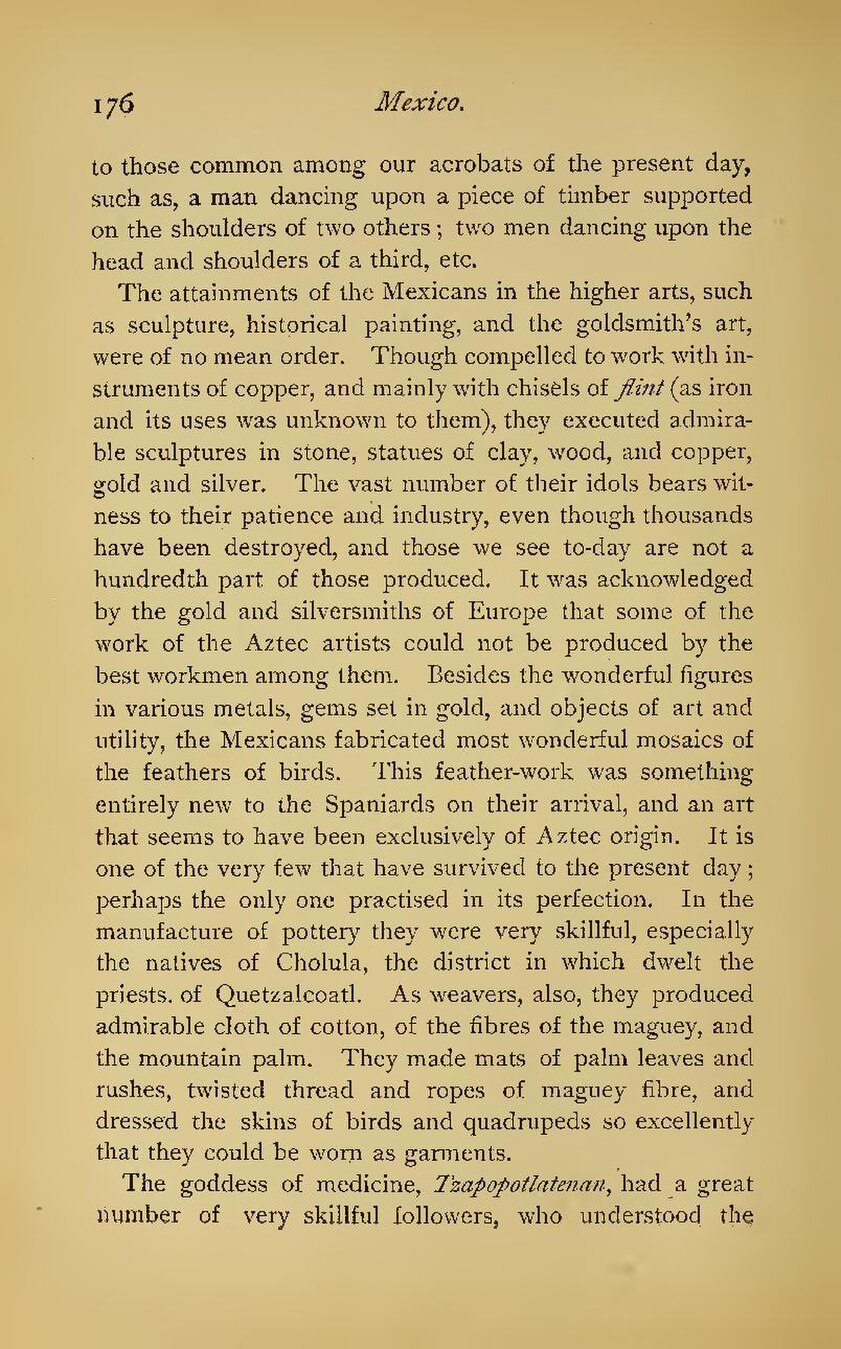to those common among our acrobats of the present day, such as, a man dancing upon a piece of timber supported on the shoulders of two others; two men dancing upon the head and shoulders of a third, etc.
The attainments of the Mexicans in the higher arts, such as sculpture, historical painting, and the goldsmith's art, were of no mean order. Though compelled to work with instruments of copper, and mainly with chisels of flint (as iron and its uses was unknown to them), they executed admirable sculptures in stone, statues of clay, wood, and copper, gold and silver. The vast number of their idols bears witness to their patience and industry, even though thousands have been destroyed, and those we see to-day are not a hundredth part of those produced. It was acknowledged by the gold and silversmiths of Europe that some of the work of the Aztec artists could not be produced by the best workmen among them. Besides the wonderful figures in various metals, gems set in gold, and objects of art and utility, the Mexicans fabricated most wonderful mosaics of the feathers of birds. This feather-work was something entirely new to the Spaniards on their arrival, and an art that seems to have been exclusively of Aztec origin. It is one of the very few that have survived to the present day; perhaps the only one practised in its perfection. In the manufacture of pottery they were very skillful, especially the natives of Cholula, the district in which dwelt the priests, of Quetzalcoatl. As weavers, also, they produced admirable cloth of cotton, of the fibres of the maguey, and the mountain palm. They made mats of palm leaves and rushes, twisted thread and ropes of maguey fibre, and dressed the skins of birds and quadrupeds so excellently that they could be worn as garments.
The goddess of medicine, Tzapopotlatenan, had a great number of very skillful followers, who understood the
